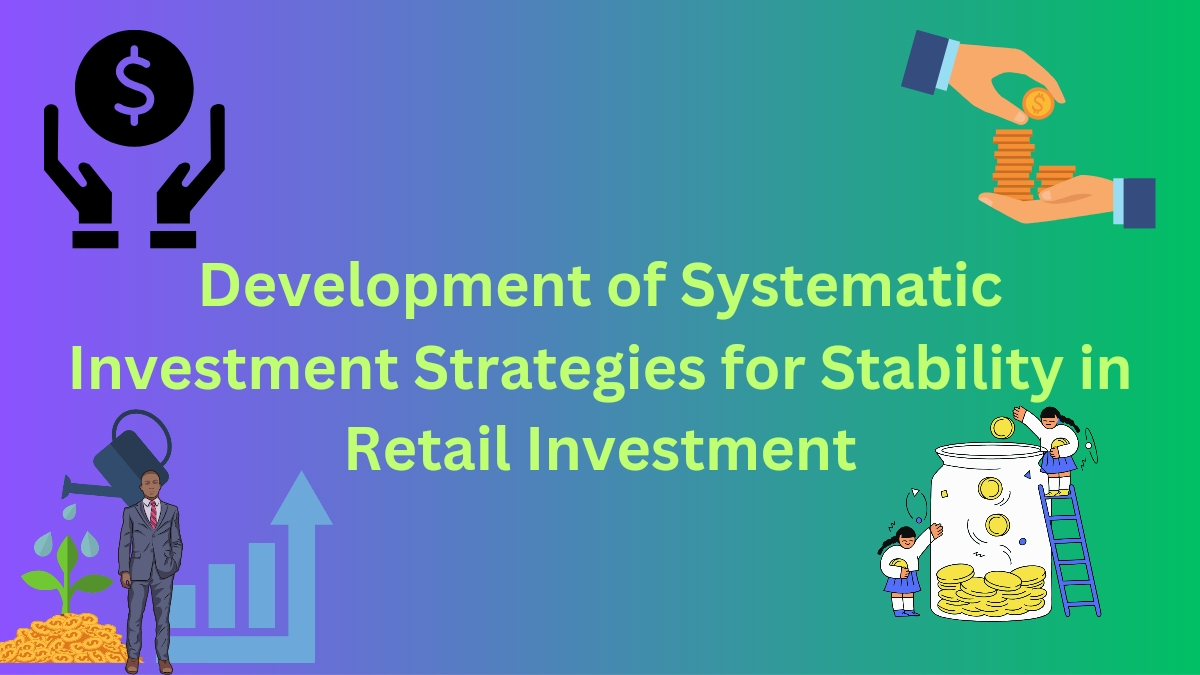Development of Systematic Investment Strategies for Stability in Retail Investment [2024]

Retail investment, the practice of individuals investing in financial assets, has gained immense popularity in recent years. With the rise of online trading platforms, increased financial literacy, and easier access to information, more people are engaging in investment activities.
However, retail investors often face challenges such as market volatility, emotional decision-making, and lack of expertise, which can lead to inconsistent returns and potential losses. To address these challenges and promote stability in retail investment, the development of systematic investment strategies is crucial. Here we will explore the concept of systematic investment strategies, their importance in retail investment stability, and various approaches to their development.
Understanding Systematic Investment Strategies
Systematic investment strategies, also known as systematic trading or quantitative trading, involve the use of predefined rules and algorithms to make investment decisions. These strategies rely on quantitative analysis, statistical models, and automation to execute trades systematically, removing human emotions and biases from the decision-making process.
By following a disciplined and systematic approach, investors aim to achieve consistent returns and mitigate risks associated with market fluctuations.
Importance of Systematic Investment Strategies in Retail Investment Stability
1. Risk Management:
Systematic investment strategies enable retail investors to manage risk more effectively by diversifying their portfolios, implementing stop-loss orders, and setting risk limits based on predefined criteria. This helps to protect capital during market downturns and minimize the impact of adverse events on investment performance.
2. Emotion Control:
Emotional decision-making is a common pitfall for retail investors, often leading to impulsive actions and suboptimal outcomes. Systematic strategies eliminate emotional biases by relying on objective criteria and predefined rules, thereby promoting disciplined and rational investment behavior.
3. Consistent Returns:
By adhering to a systematic approach, investors aim to generate consistent returns over the long term, regardless of short-term market fluctuations. This consistency provides stability and predictability to retail investment portfolios, enhancing investor confidence and satisfaction.
4. Efficiency and Automation:
Automation plays a crucial role in systematic investment strategies, allowing for efficient execution of trades, timely rebalancing of portfolios, and continuous monitoring of market conditions. This automation reduces the time and effort required for active portfolio management, making it more accessible to retail investors.
5. Adaptability:
Systematic strategies can adapt to changing market conditions and incorporate new information in real-time, allowing investors to stay ahead of the curve and capitalize on emerging opportunities. This adaptability enhances the resilience of retail investment portfolios and enables investors to navigate dynamic market environments more effectively.
Development of Systematic Investment Strategies

1. Data Collection and Analysis:
The development of systematic investment strategies begins with the collection and analysis of relevant data, including historical price movements, fundamental indicators, and market sentiment. This data serves as the foundation for building quantitative models and identifying patterns that can be exploited for investment purposes.
2. Model Development:
Quantitative models form the core of systematic investment strategies, providing the framework for making investment decisions based on predefined rules and algorithms. These models may include trend-following strategies, mean-reversion strategies, machine learning algorithms, or a combination of different approaches, depending on the investment objectives and risk tolerance of investors.
3. Backtesting and Optimization:
Once a quantitative model is developed, it undergoes rigorous backtesting and optimization to evaluate its performance under various market conditions and fine-tune its parameters for optimal results. Backtesting involves simulating trades using historical data to assess the efficacy of the strategy and identify potential weaknesses or areas for improvement.
4. Risk Management Rules:
Risk management is an integral part of systematic investment strategies, and specific rules and safeguards are implemented to mitigate various types of risks, including market risk, liquidity risk, and operational risk. These risk management rules may include position sizing limits, stop-loss orders, portfolio diversification guidelines, and stress testing procedures.
5. Implementation and Execution:
Once a systematic investment strategy is developed and validated, it is implemented in live trading environments using automated trading platforms or algorithmic trading systems. This implementation phase involves monitoring the performance of the strategy in real-time, making necessary adjustments as market conditions change, and ensuring compliance with regulatory requirements and best practices.
6. Monitoring and Evaluation:
Continuous monitoring and evaluation are essential for the ongoing success of systematic investment strategies. Performance metrics such as risk-adjusted returns, drawdowns, and Sharpe ratios are regularly monitored to assess the effectiveness of the strategy and identify any deviations from expected outcomes. Feedback from monitoring and evaluation processes is used to refine and improve the strategy over time, ensuring its relevance and adaptability in dynamic market environments.
Conclusion : Systematic Investment Strategies
Systematic investment strategies play a crucial role in promoting stability and consistency in retail investment portfolios. By leveraging quantitative analysis, automation, and risk management techniques, these strategies enable investors to make disciplined and rational investment decisions, mitigate risks, and achieve consistent returns over the long term.
The development of systematic investment strategies involves a systematic process of data collection, model development, backtesting, optimization, implementation, and monitoring, aimed at maximizing investment performance while minimizing downside risk.
As retail investors continue to seek ways to navigate complex and unpredictable financial markets, the importance of systematic investment strategies in promoting stability and resilience cannot be overstated. Please let us comment about the post “Development of Systematic Investment Strategies for Stability in Retail Investment”
Read more:
- 15 FAQ on Personal Finance
- Gross Domestic Product (GDP)
- 15 FAQ on 80-20 Rule (Pareto Principle)
- Depreciation- Meaning, Definition, Types and Calculation
- Fiscal Deficit- Definition, Calculation and Significance
- Balance of Payments (BoP): Explained
- Balance of Trade: Definition, Measurement and Significance
- Allocative efficiency: Definition, Meaning and Significance
- Automatic stabilizers: Definition, Mechanism and Significance
- Capacity utilization: Definition, Measurement and Utilization





